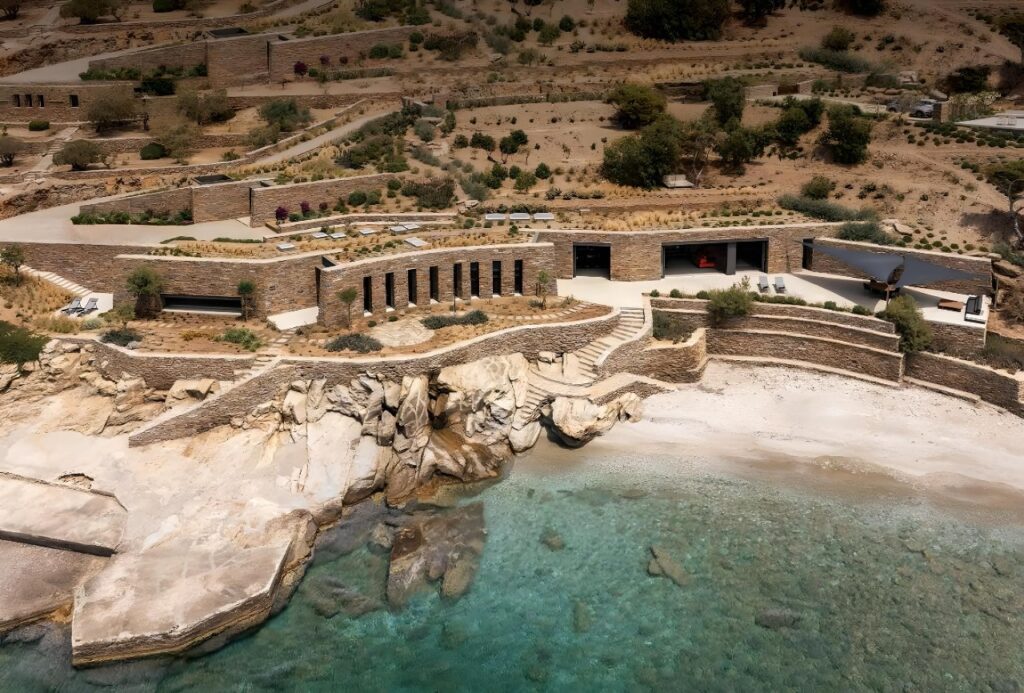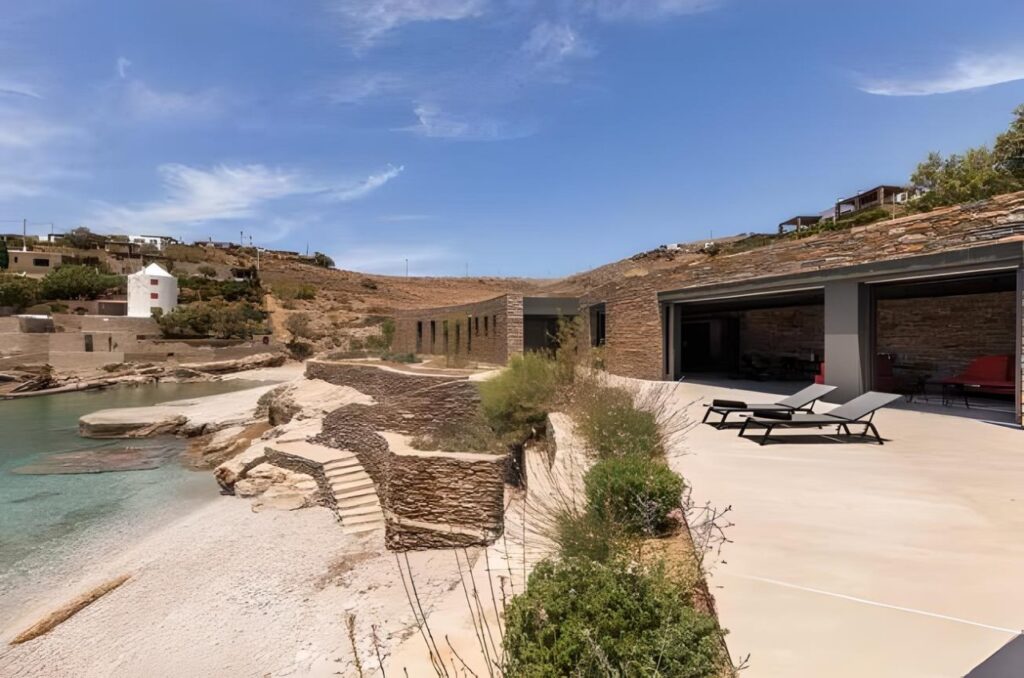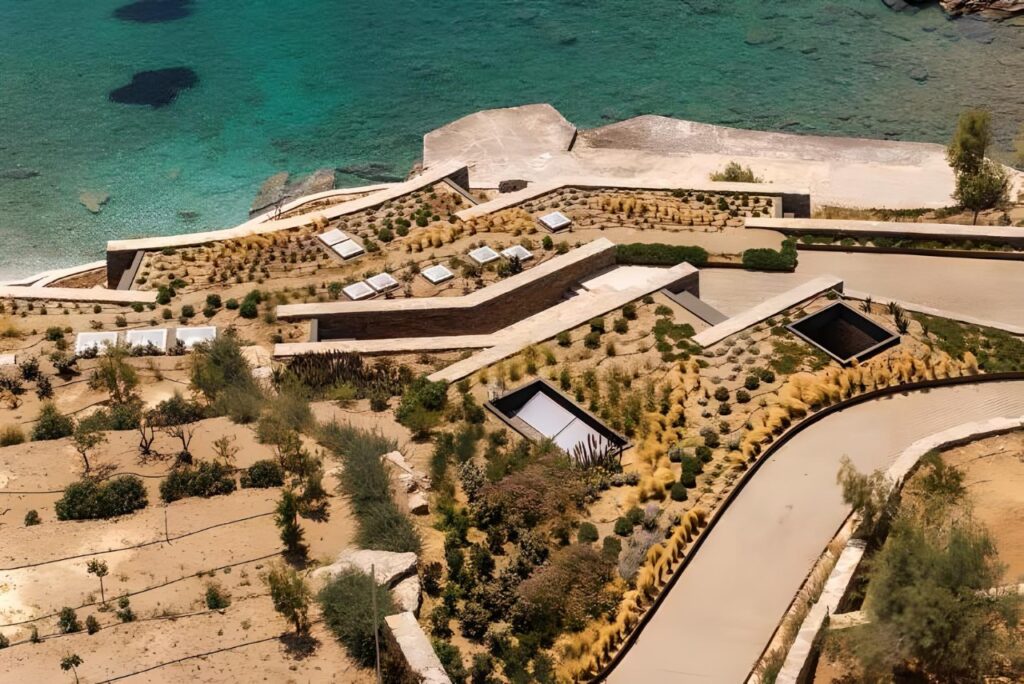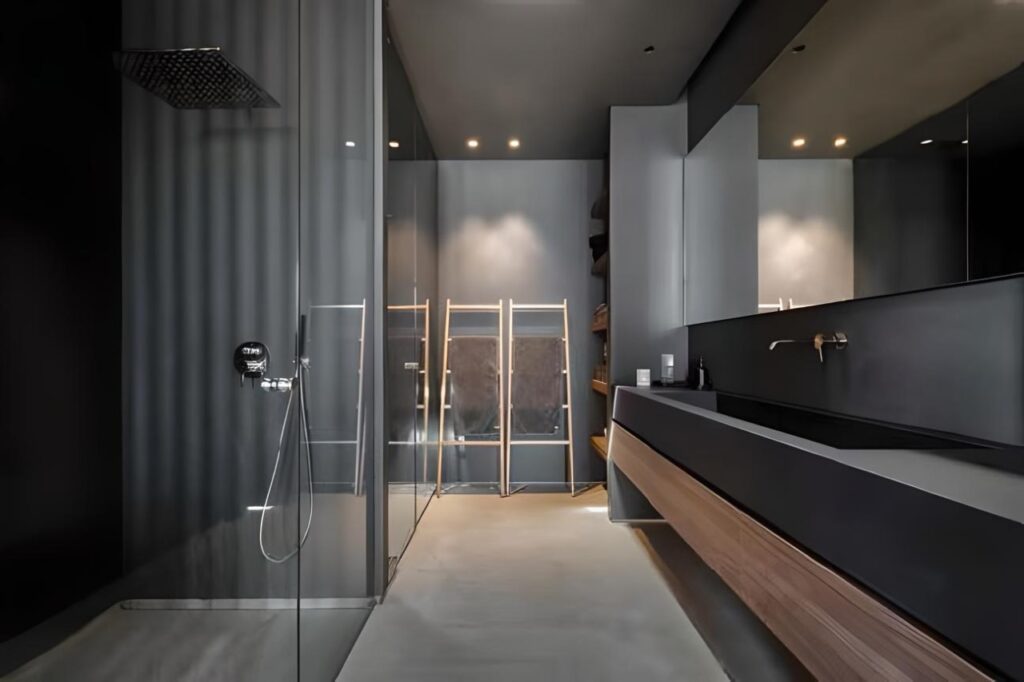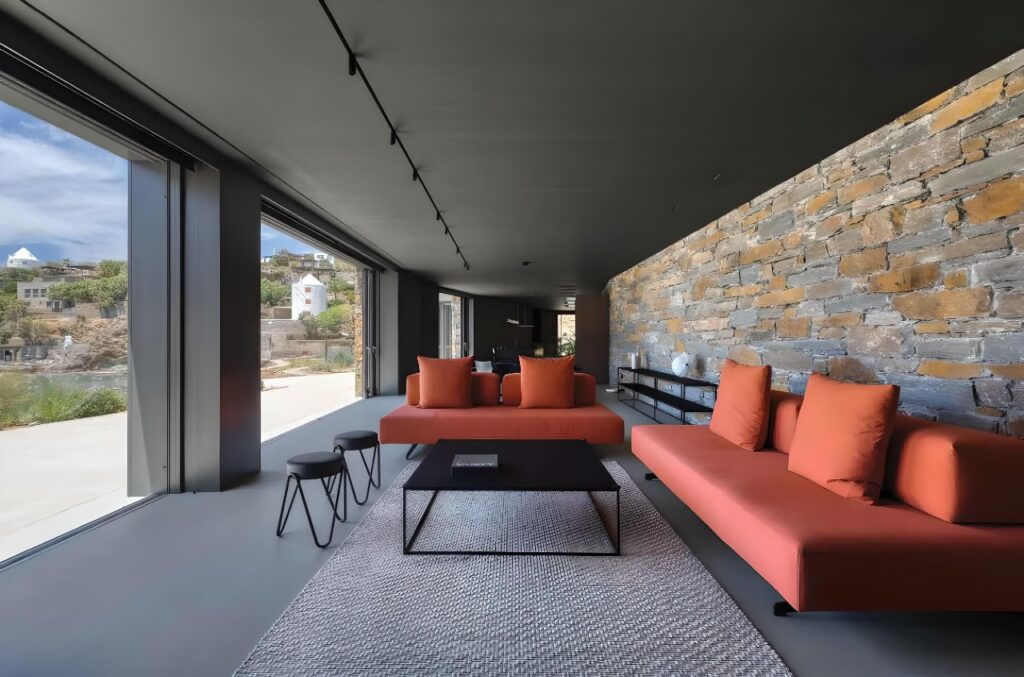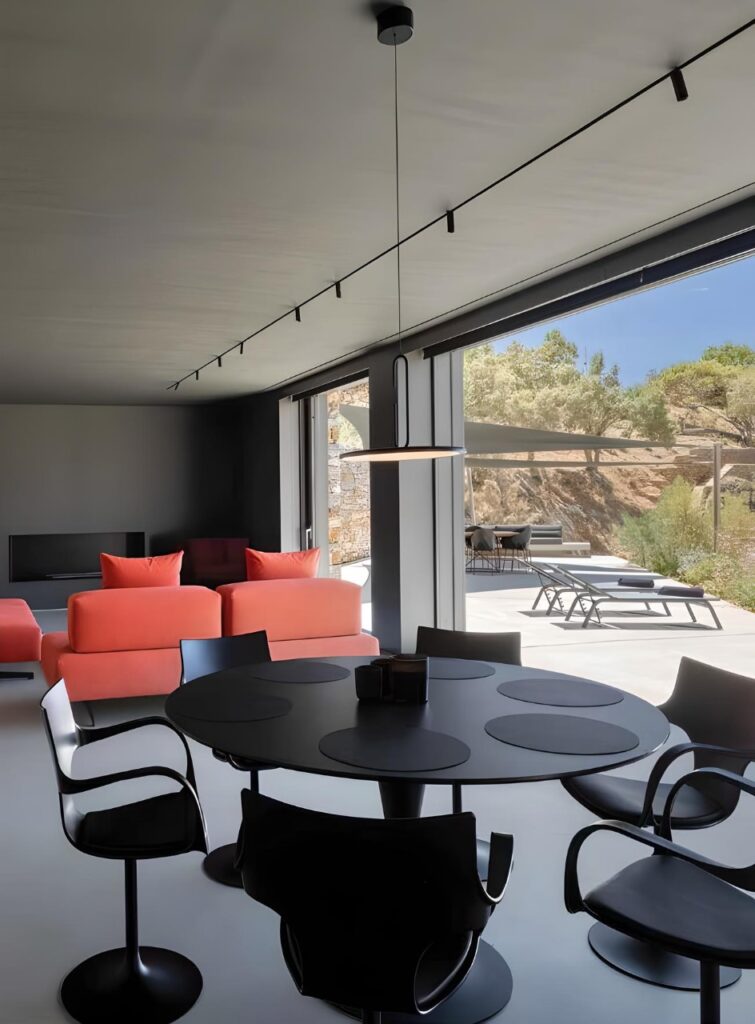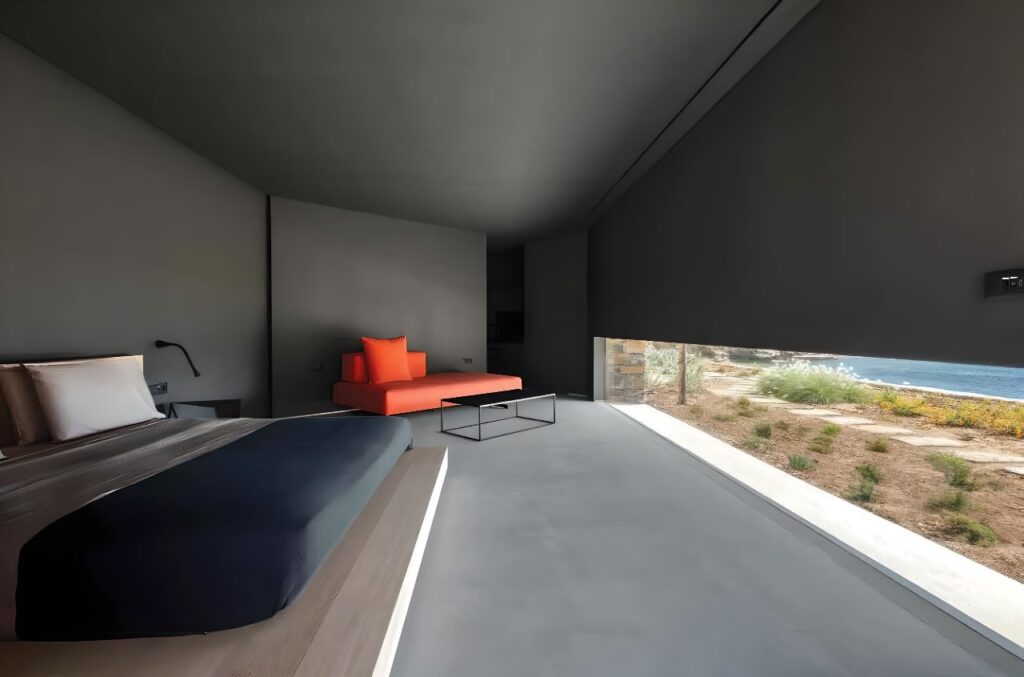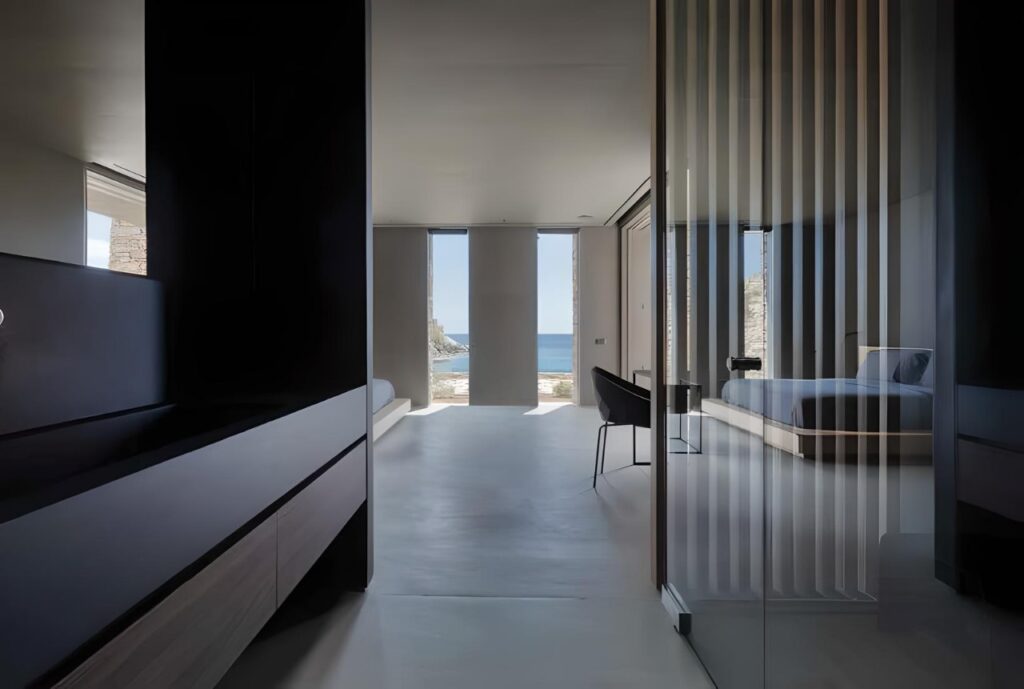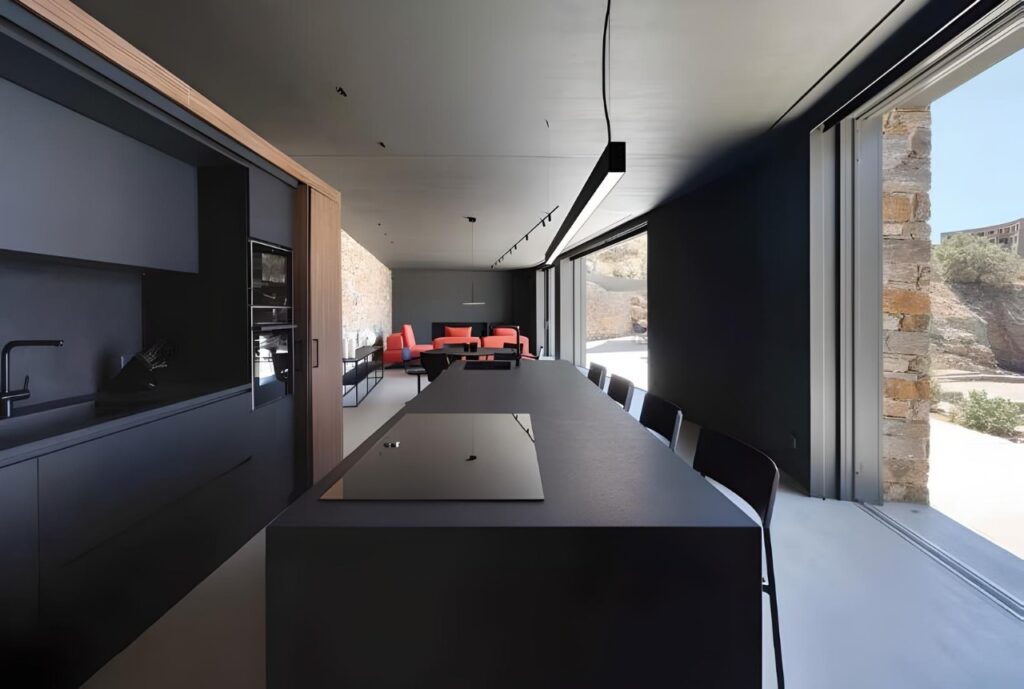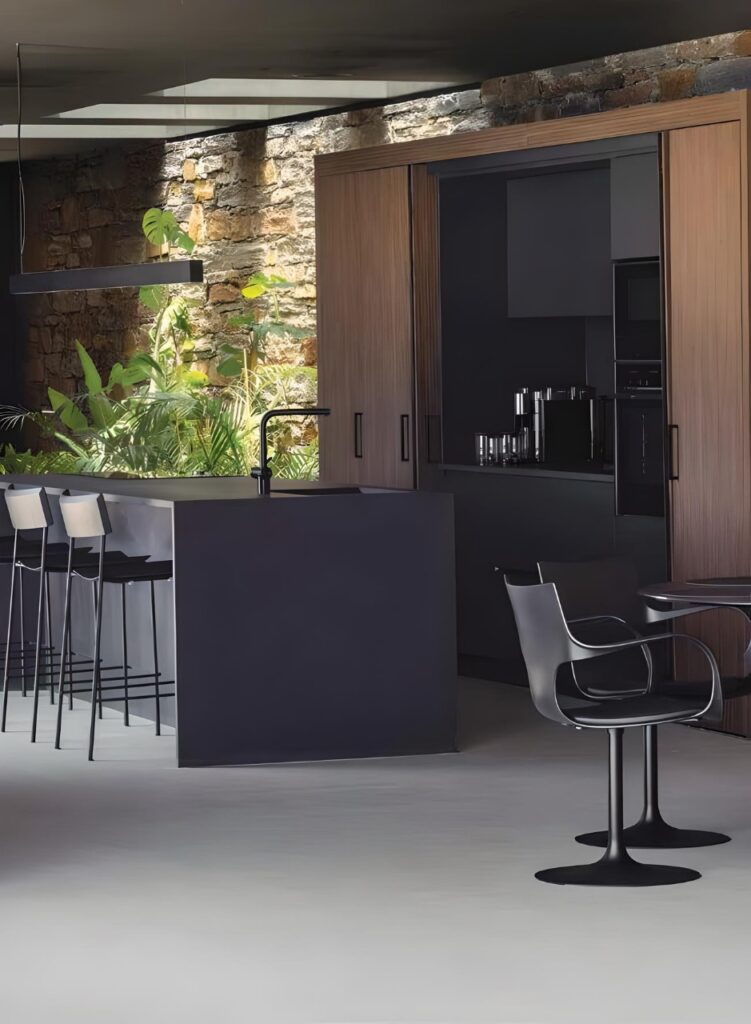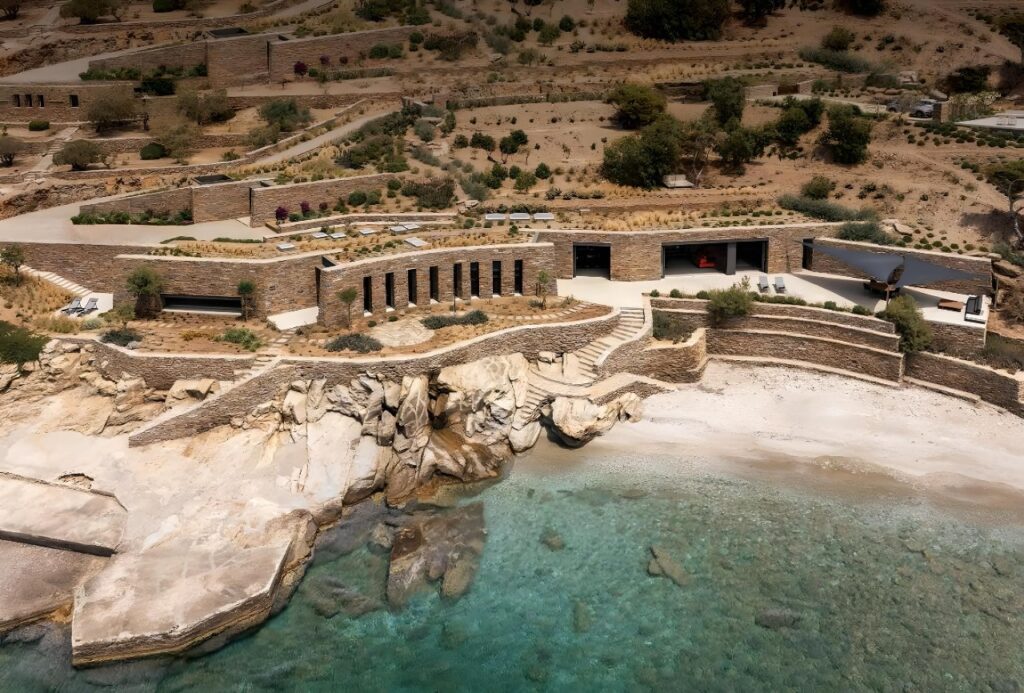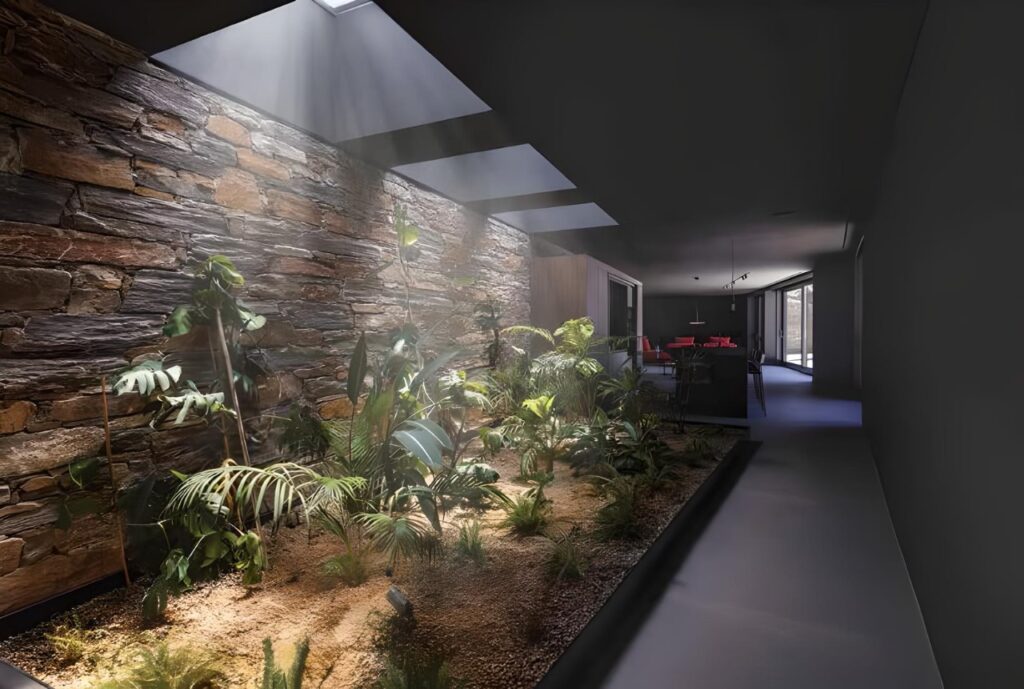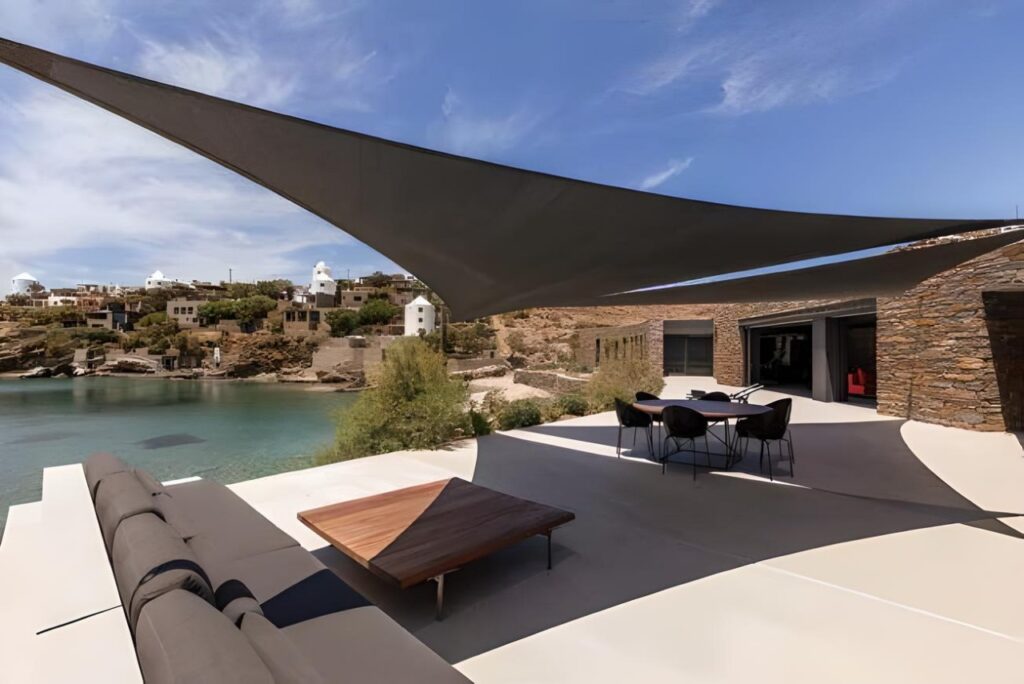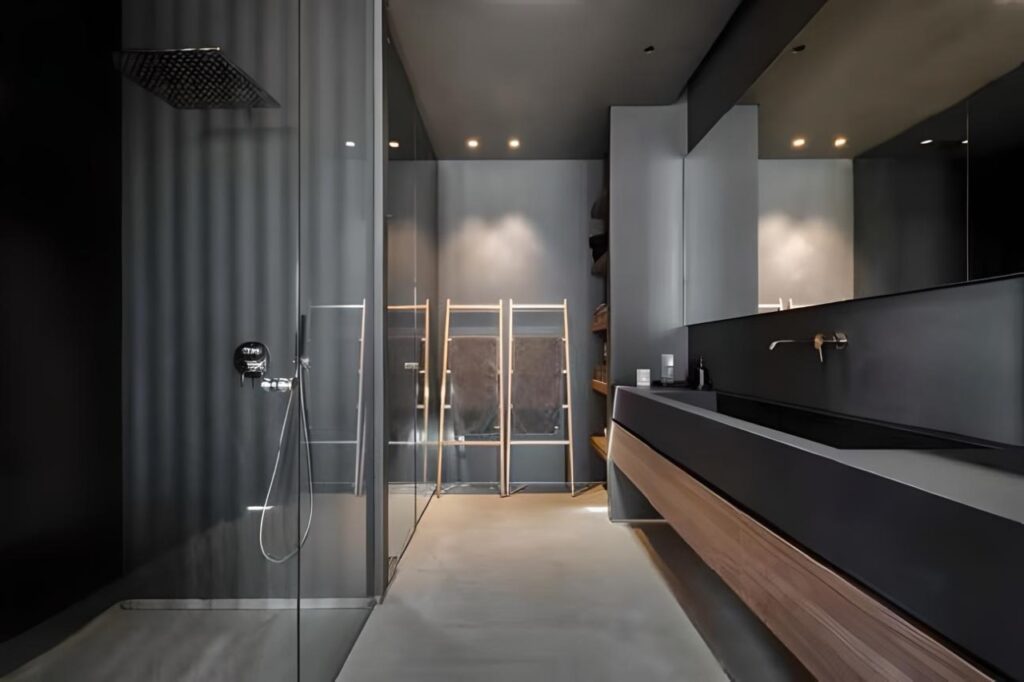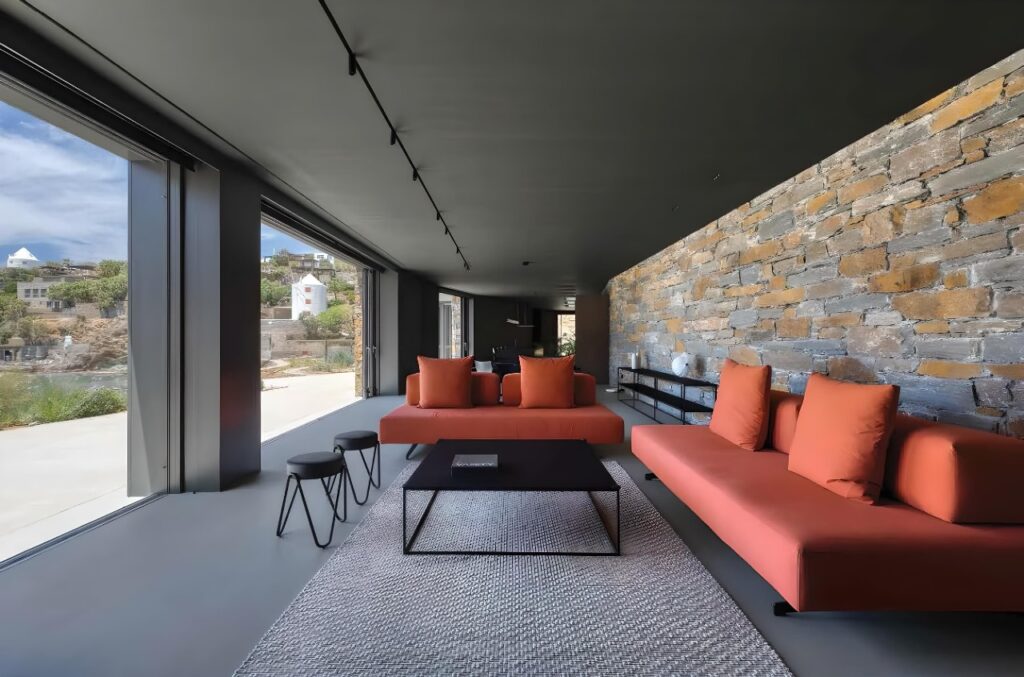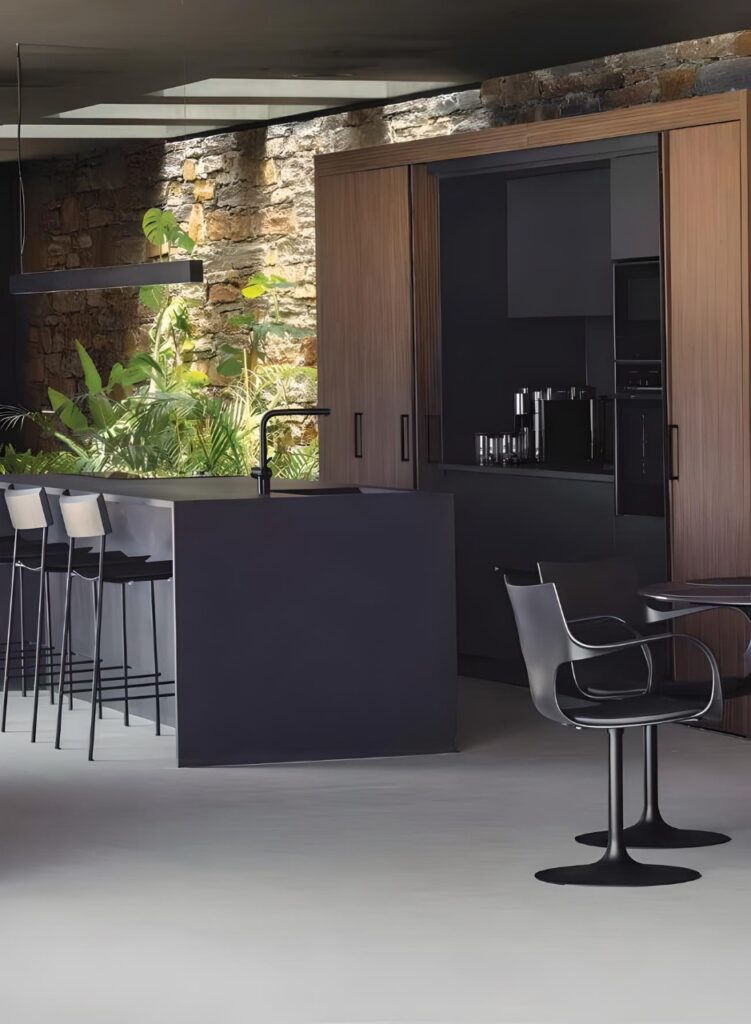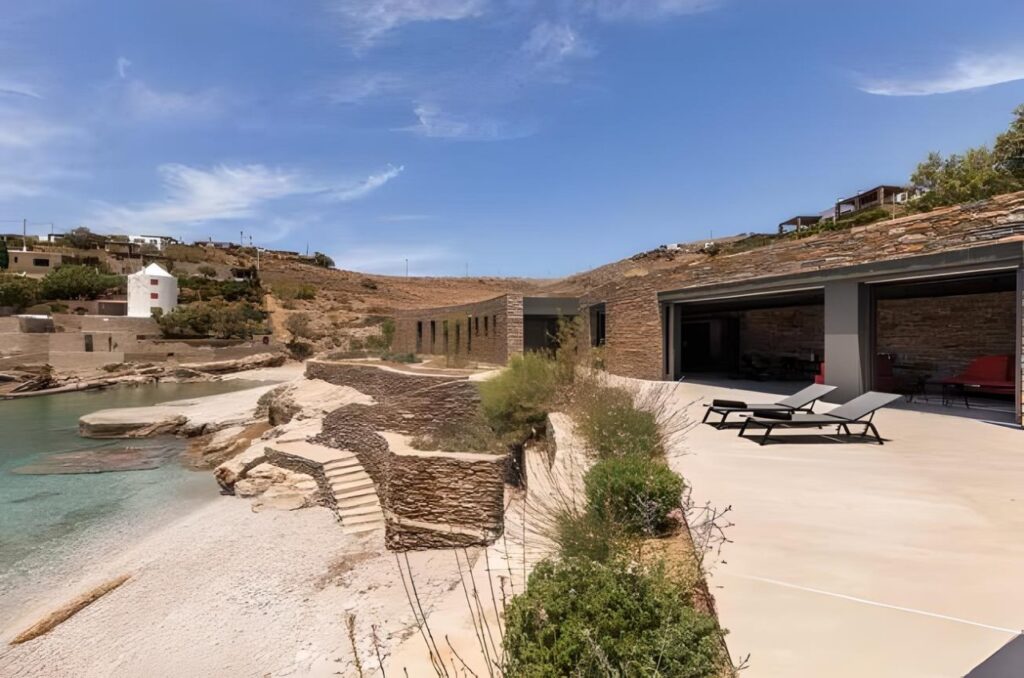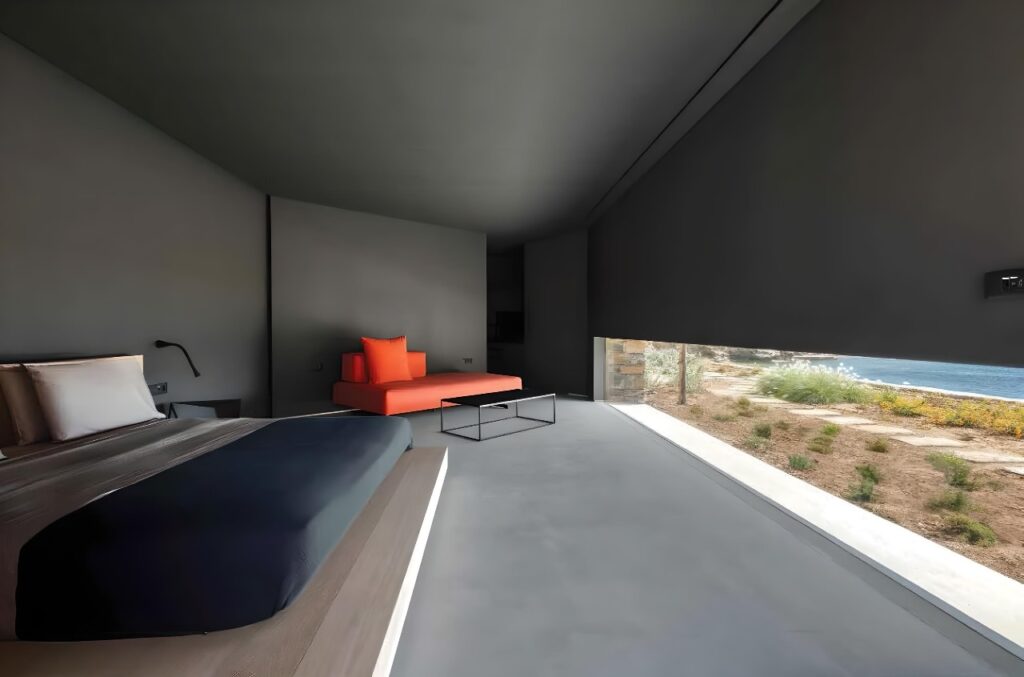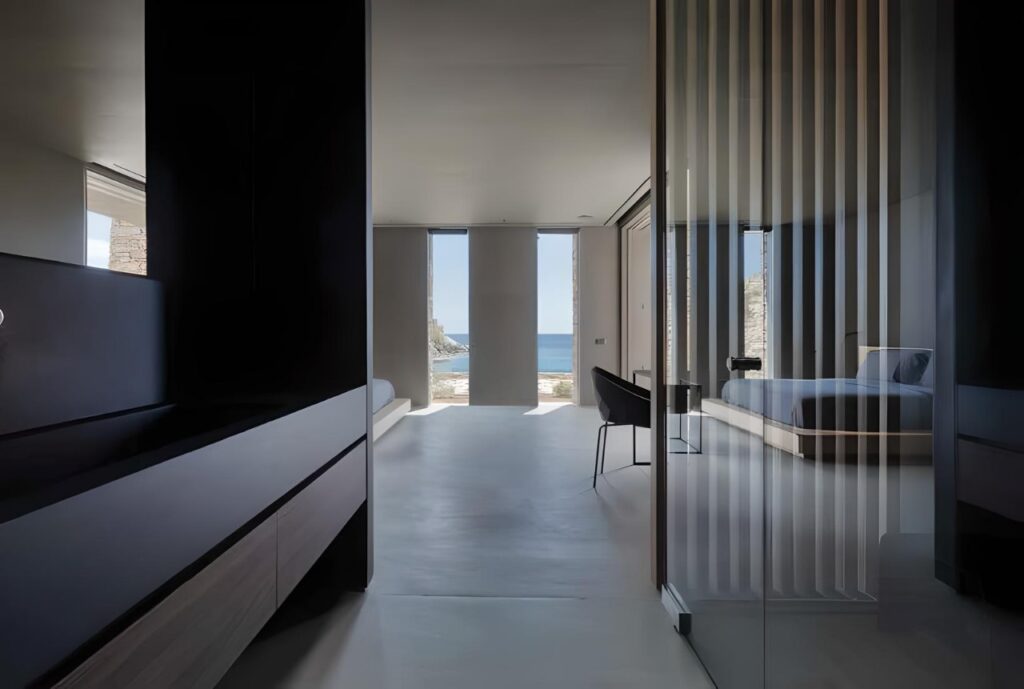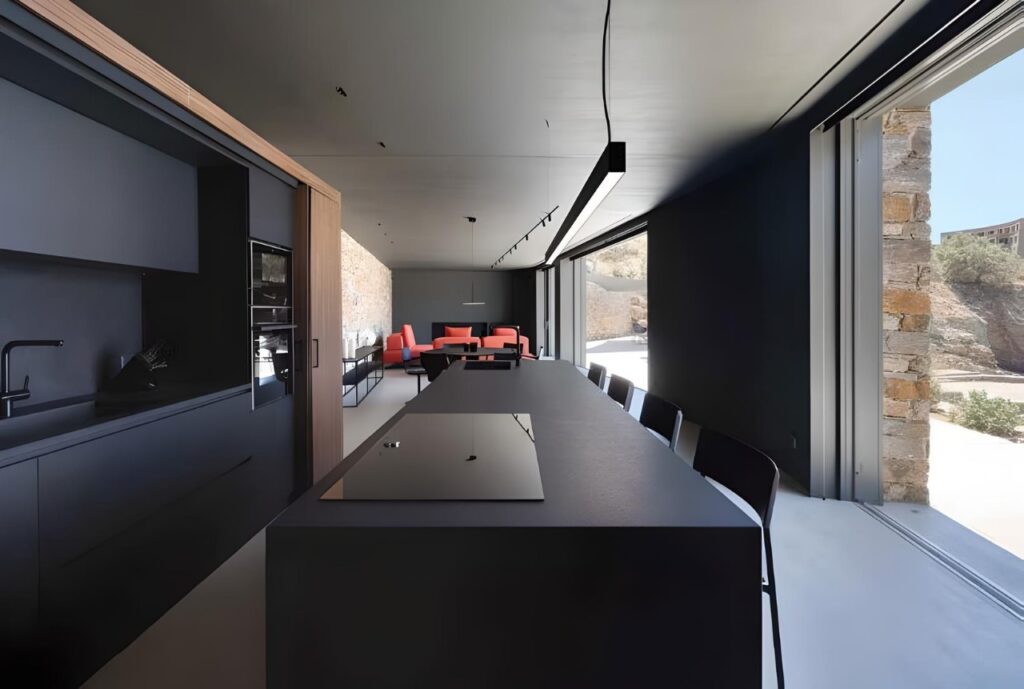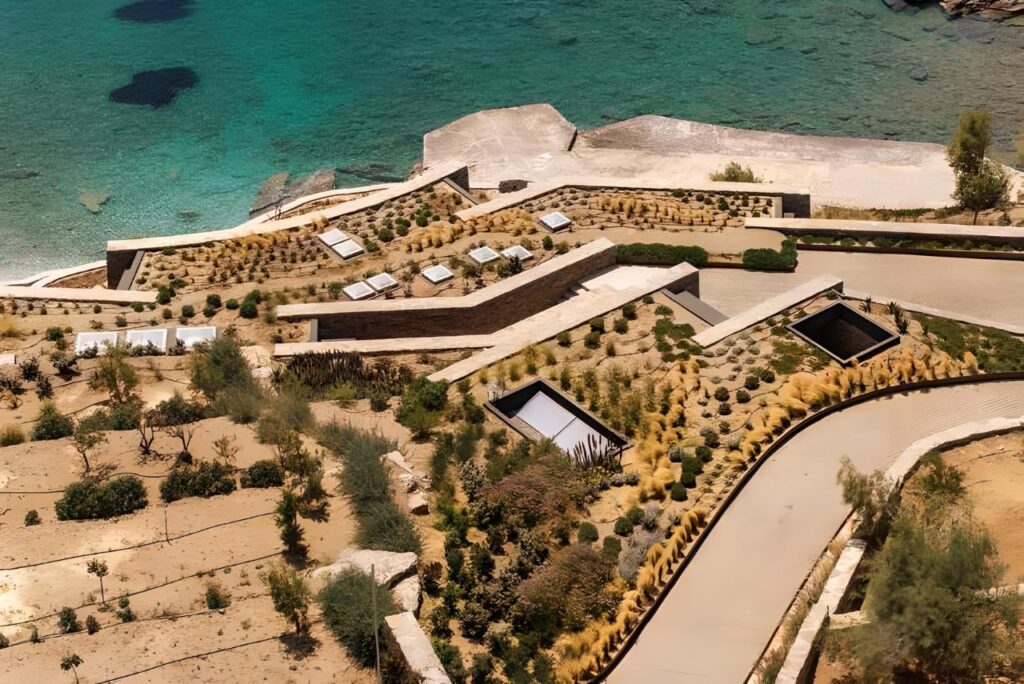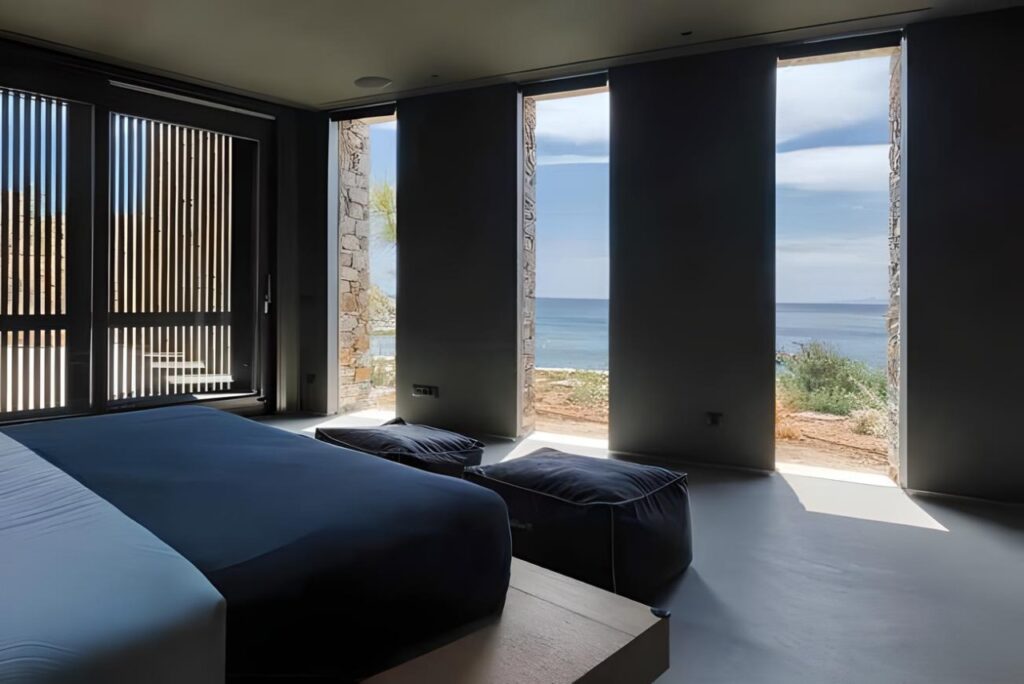Nestled on the west side of the island of Kea, this residence occupies the historic site of ancient stone warehouses once used to load goods onto boats in a sheltered bay. The resort, previously converted into a restaurant, has been meticulously redesigned to meet the needs of peaceful summer living, blending harmoniously into the natural landscape. Architectural features Access and layout: Access to the property is from the upper part of the land, through a light ramp which sinks into the ground, establishing the main circulation axis. A pivoting glass door opens to a ceiling-lit interior garden, replacing the formerly dark kitchens.
The central axis branches out on one side towards a vast living space comprising a kitchen, dining room and living room, all directly connected to the courtyard by large sliding doors. The other side leads to two en-suite bedrooms located behind a curved stone wall with narrow linear windows and domes providing natural light to the service spaces.
Guest House : The layout is completed by a guest house adjacent to the bedrooms, with a separate entrance and an impressive low horizontal opening offering skyline views from bed height. Outdoor spaces The vast outdoor area, bordering the sea, includes a large terrace that follows the natural lines of the rocks, discreetly divided into separate sections.
The exterior living space, adjacent to the interior living spaces, is shaded by two tensioned awnings. A terraced path leads directly to a small beach, providing easy access to the sea. Materials and finishes The dominant material throughout the building is local natural stone from the original warehouses, giving the structure the appearance of dry stone walls interspersed with interior and exterior spaces.
The floors are finished with sand-colored cement, while extensive earthen areas on the terrace and roof integrate the building into the island’s arid landscape. The interior features dark hues with modern gray dividing walls, black metal details and frames, and black stone and walnut stationary furniture. Furniture and environmental considerations The furniture is minimal and light, in the same dark tones as the building, except for the bright orange central sofas in the living room and guest house.
The building harmonizes with the landscape thanks to its organic lines, its green roof and its natural materiality. Additionally, it is equipped with an energy management system to minimize its environmental footprint and a domestic desalination unit to utilize its seaside location without burdening the water reserves of the fragile ecosystem of the island.
This residence perfectly exemplifies a blend of traditional architecture and modern design, offering a serene refuge that respects and enhances its natural environment.
Prix : € 4.200.000

